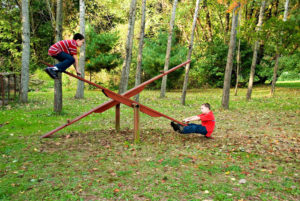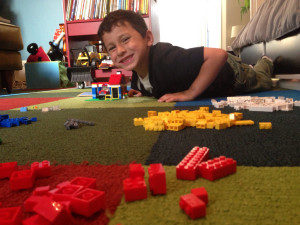This month, fast-casual Mexican restaurant chain Chipotle announced that it is introducing a new restaurant format that is designed to only provide pickup and delivery of orders.
Chipotle Digital Kitchen is the company’s venture into the innovative, “ghost kitchen” business model that has caught on as a result of the coronavirus.
In this business model, restaurants make no provision for diners to come to their location because they are usually situated in inexpensive, industrial buildings.
A common approach is to locate them in urban warehouses that contain multiple small kitchens which are each leased by a different restaurant or operator. Sometimes, even multiple restaurants are run out of the same ghost kitchen.
A typical sit-down restaurant has a Net Income margin of about 15%, so when they switch to a delivery only model, after they pay the delivery service fee of 10% to 35% of the total order, the restaurant barely breaks-even or loses money.
The Ghost Kitchen Concept
However, using a ghost kitchen concept eliminates the need for expensive prime locations, costly build outs, and  tremendously reduces their staffing outlays. Ghost kitchen can generate 30% to 40% Net Income, which means they can pay the 10% to 35% that companies like DoorDash, Uber Eats, or Grubhub charge for delivery, and still make a profit.
tremendously reduces their staffing outlays. Ghost kitchen can generate 30% to 40% Net Income, which means they can pay the 10% to 35% that companies like DoorDash, Uber Eats, or Grubhub charge for delivery, and still make a profit.
Besides being an innovative way restaurant owners can make a profit during the COVID-19 crisis, it allows them to test new cuisine concepts with relatively little financial commitment.
For instance, when the Chief Operating Officer of the company that owns Beef O’Brady’s in Florida (FSC Franchise), was looking to test a new fast-casual chicken restaurant concept this summer, called the Hatchery, he said, “Why don’t we run this out of our test kitchen as a ghost kitchen?”
This innovative approach ended up doing well enough that the company launched its first bricks-and-mortar Hatchery at the end of August.
Innovating the Ghost Kitchen Business Model
 Building on this innovative trend, companies like Miami-based REEF Technology have set up ghost kitchens in containers located in parking lots and garages left unused by employees who are now working remotely. As a result, they are now working with brands like Kona Poke, BurgerFi and Wow Bao, as well as a celebrity-chef concept named “Michael’s Genuine Food & Drink” to create delivery only ghost kitchens.
Building on this innovative trend, companies like Miami-based REEF Technology have set up ghost kitchens in containers located in parking lots and garages left unused by employees who are now working remotely. As a result, they are now working with brands like Kona Poke, BurgerFi and Wow Bao, as well as a celebrity-chef concept named “Michael’s Genuine Food & Drink” to create delivery only ghost kitchens.
Even the food delivery services are getting into the ghost kitchen movement by starting to fund “delivery-optimized kitchens,” so that they can get the delivery business from the ghost kitchens.
As the Chief Operating Officer of FSC Franchise said about this innovation, “It’s accelerating what we thought was inevitable: a very delivery-focused industry.”
Innovative ideas like ghost kitchens originated in someone’s mind in the restaurant industry. Then more innovative ideas were generated from the people involved with the ghost kitchens to further innovate the concept.
So, consider your business. How do you solicit and obtain innovations from the personnel in your company? And how do you build on those innovations?
Furthermore, how can you effectively find great innovations even during the COVID-19 pandemic?
It starts with having a system to collect the submitted innovative ideas.
Idea Submission
There are two basic methods for customers, employees, suppliers, and the public (the target audiences) to submit ideas to a company.
to a company.
The first is for the organization to solicit ideas via a Campaign or Challenge.
Under this approach the company determines there is a need for ideas in a certain area, then a person or committee is put in place to manage the campaign, awards are established, and the campaign or challenge is communicated to the target audience(s). Many companies have found that is it necessary to have formal contests or challenges to motivate their audience(s) to submit ideas, otherwise relatively few ideas are received.
The “Always On” Approach
The second method is an “always on” approach where organizations do not utilize the Campaigns or Challenges, but their targeted personnel are expected to submit ideas whenever something crosses their mind.
While this is a preferred method as compared to an on-again, off-again Campaign or Challenge approach, three foundations must be present in the workplace or overall environment for this approach to work.
- A culture that is conducive to innovation must exist within the entity
- Employees and suppliers need to be trained on how to develop new ideas and innovations
- Sufficient time needs to be provided for employees and suppliers to form new, innovative ideas
These three foundations were discussed in prior newsletters, so please refer to them for more information on these three topics. However, the above third item needs to be further discussed because some companies have felt that is it necessary to specifically designate some of their employee’s workday or work week to think of innovations.
While allocating some of your employee’s time to focus on innovation is a great idea, in today’s go, go, go, production-oriented environment, few companies can afford the luxury of providing specific, set-aside time for their personnel to develop innovations.
However, as was discussed in the December 2018 and January 2019 newsletters, if you train your staff to see every problem or obstacle they encounter as an opportunity for innovation, they will begin to develop an innovation mentality.
“Embedded Innovation” – Innovating as a By-Product of Your Daily Activities
 Once people have this mindset, they will start to see opportunities for innovations just as a by-product of their daily activities. This means that very little “designated” time needs to be specifically relegated to innovating because they will innovating all day long.
Once people have this mindset, they will start to see opportunities for innovations just as a by-product of their daily activities. This means that very little “designated” time needs to be specifically relegated to innovating because they will innovating all day long.
Once personnel have this attitude and habit, all that is required is to provide them with an easy to use system to capture these ideas and then to recognize and reward them to reinforce their actions.
This means the need for regularly having Campaigns or Challenges can be greatly decreased or eliminated. We call this approach to innovation “embedded innovation”, where people are continually looking for opportunities for innovation as a way of life.
Lastly, a combined approach to solicit innovations can be employed. This involves using the “always on”, embedded innovation method as the foundation to collect innovations, with Campaigns or Challenges being used where there are special situations or needs.
Where to Start
To solicit and obtain innovations from the personnel in your company, first determine which of the two approaches you wish to employ.
The first is to utilize Campaigns or Challenges to obtain innovations from customers, employees, suppliers, and the public.
The second is to use an “always on” approach where an organization’s targeted audience is expected to submit ideas whenever something crosses their mind. Three foundations must be present in the workplace or overall environment for this approach to work.
- A culture that is conducive to innovation must exist within the entity
- Employees and suppliers need to be trained on how to develop new ideas and innovations
- Sufficient time needs to be provided for employees and suppliers to form new, innovative ideas
If you train your staff to see every problem or obstacle they encounter as an opportunity for innovation, they will begin to develop an innovation mentality. They will then see opportunities for innovations just as a by-product of their daily activities.
This means that very little “designated” time needs to be specifically relegated to innovating because they will innovating all day long.
If you would like assistance with effectively implementing an Idea Submission system in your company or organization, please contact us using the information below so we can be a resource to you in this all-important area.
Fountainhead Consulting Group, Inc. is an Innovation and Business Planning firm. During the past 17, years we have shown over 1,200 companies how to achieve their goals by using our unique, comprehensive, and systematic FastTrak Innovation Program™, Innovation Academy™, and Structure of Success™ methodologies. Using the components in these methodologies, each month we examine an aspect of how to transform your business or organization into a true 21st Century enterprise.
Office: (770) 642-4220
www.FountainheadConsultingGroup.com
George.Horrigan@FountainheadConsultingGroup.com
Tags: entrepreneur, front end of innovation, innovation, invention, small business consulting, small business planning, start a business

